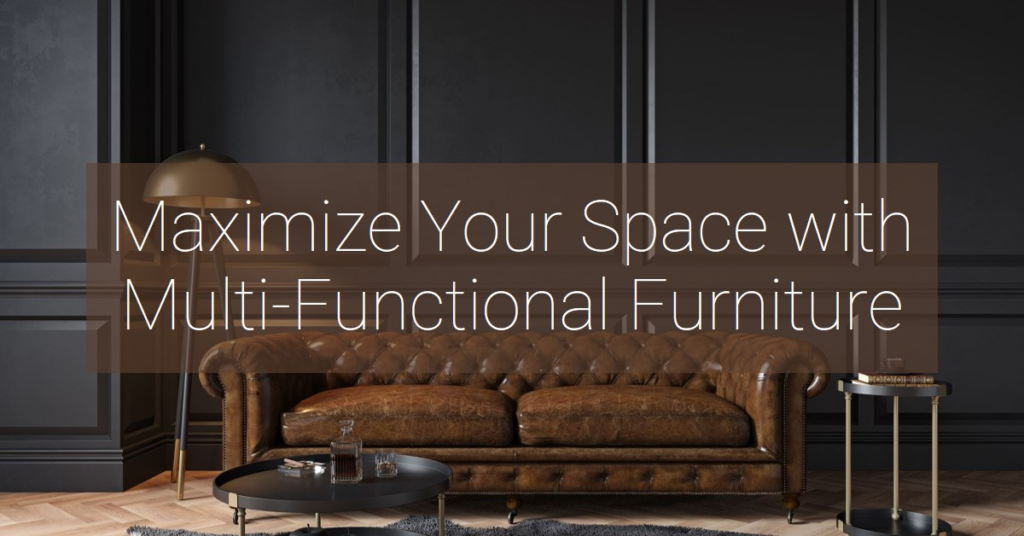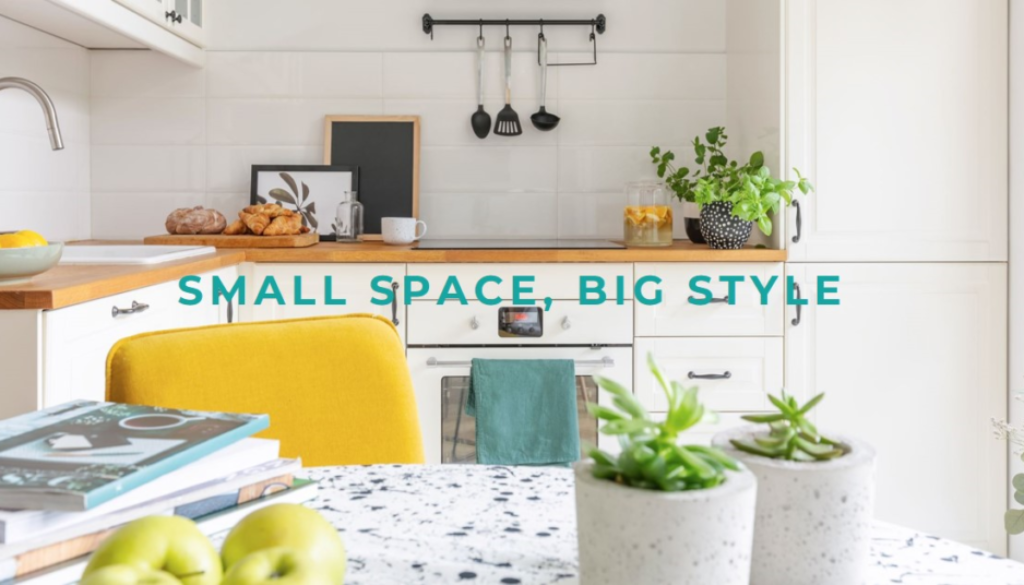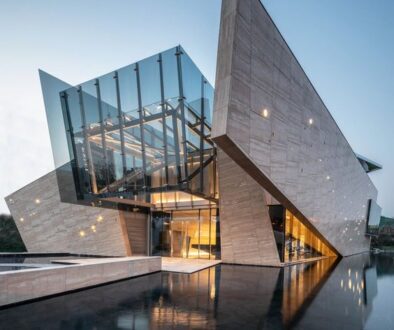Maximizing Small Spaces with Design
Creating small space designs can be tough, but it is also very profitable. Even the smallest rooms can become functional, beautiful, and comfortable if you have all the necessary skills. In this article, I’ll provide some interior design concepts that will be helpful when working with limited spaces.
Utilize Vertical Space
Think upward if you want to make the most of your small space. Use the walls and ceiling as much as possible to allow for more storage systems, whether one large wall unit or several small ones. Modular furniture is also efficient in such cases.
Multi-functional Furniture

Each piece of furniture should have multiple uses in cramped quarters. A bench with storage underneath or a daybed that functions as a couch would be considered multi-functional furniture. This kind of thinking dramatically increases the usefulness of any space. Make sure you get fifty-fifty on comfort and practicality.
Mirrors and Reflective Surfaces
Small areas may benefit from employing mirrors as part of their layout. Mirrors can reflect light and create an impression of depth, making a room seem bigger. This effect can be amplified by introducing reflective materials like glass or metal finishes. Additionally, strategically positioning a mirror has the potential to illuminate spaces while also infusing them with sophistication.
Light and Color
Many take light and colour for granted as vital elements that create the illusion of a larger space. This implies that light and neutral colours make a room appear bigger, while dark tones can make the same space seem smaller. One great way to add to this effect is to ensure that your windows let in as much natural light as possible by keeping them clean and using light curtains or none.
Smart Storage Solutions
Small spaces require practical storage solutions. One can keep objects under their bed, add built-in shelves, or organize using containers. Moreover, thinking outside the box regarding storage solutions is excellent, like creating a headboard from the bookshelf or having a nightstand made of chest drawers.
Proportional Furniture
One way to make a room look more balanced and spacious is by selecting furniture that fits its size. Oversized furniture can make small rooms look even smaller, while tiny ones give them a more open feel. Would you like to select an item that suits the proportion of each room so there is enough space for people to walk around freely?
Floating and Wall-mounted Furniture
Avoiding putting too many items on the floor can help create a feeling of spaciousness in a room. Examples of what you can use to get items off the floor include floating furniture like wall-mounted desks, vanities, and shelves. These provide more storage and make the space look less crowded. What’s more? You will have an easier time cleaning and maintaining cleanliness when you choose this design.
Incorporate Natural Elements

Incorporating natural elements can make your small space feel more spacious and calming. Houseplants, natural wood finishes, and stone accents can give a room warmth and texture and create a very inviting atmosphere. Furthermore, natural light will help bring these features into focus and make the area seem more connected to the outside world.
Clever Use of Mirrors
Mirrors are not only functional but also stylish. A half mirror can maximize space and add a unique design element to a room. Creating a gallery wall of mirrors can also effectively reflect light and add visual interest.
Pocket and Sliding Doors
Traditional doors that swing open can occupy valuable space in a small room. Pocket or sliding doors can save space and provide a sleek, modern look. These doors can be used for closets, bathrooms, or room dividers.
Creative Seating Solutions
Seating can be a challenge in small spaces. Consider pouffes, benches, or folding chairs that can be easily moved or stored when not in use. A seating bench with storage underneath can also provide additional seating and storage without taking up extra space.
Integrated Kitchen Design
Integrating the kitchen into the living space without making it look like a kitchen can be a design challenge in small apartments. Using cohesive design elements, such as matching cabinetry and countertops, can create a seamless transition between the kitchen and living areas. Floating shelves and storage rails can also provide additional storage without cluttering the space.
Expressive and Functional Decor
Expressing yourself is necessary, even if the space is limited. A small room can be made to feel more personalized and lively by hanging pictures in groups or using bright designs on fabrics. At the same time, everything should have its place; therefore, ensure each item has a reason for being there.
Architectural Quirks and Built-ins
You can exploit architectural features like alcoves or niches for extra storage or to display items. You may also consider built-in furniture such as a box bed or banquette seating with storage underneath as space savers that provide unique character for your room design.
Lighting and Ambiance
Good lighting is critical in small spaces. Ambient, task, and accent lights can create a well-lit and inviting atmosphere. Sconces, pendant lights, and floor lamps can provide enough light without taking up much table or floor space.
Keep It Cohesive
Keeping the same design throughout the room will give it an open and coordinated feel. If you use the same colour scheme for everything, match the style of your furniture, and bring in corresponding decorative elements—bingo! You’ve got yourself a good-looking area. This means you want to avoid having too many different things simultaneously because nothing seems to belong there.
Play with Scale and Proportion
Playing with scale and proportion can add visual interest to a small room. Mixing larger statement pieces with more minor, delicate items can create a balanced and dynamic look. However, it’s crucial to ensure that the overall scale of the furniture and decor fits well within the room’s dimensions.
Functional and Stylish Rugs
Picking the correct carpet can keep a little space from feeling too bare while giving it warmth and texture. Firstly, select a rug that fits your room’s design and will fit appropriately according to its size. Furthermore, if you need to break up an open-concept floor plan or give some semblance of structure, then consider getting an area rug like this! In summary, use rugs to divide spaces in large rooms.
Experiment with Bold Design Choices
Don’t hesitate to be bold in a small area. Vivid colours, patterns, or statement pieces can inject your personality and make the room feel more alive. However, remember to mix some neutral elements with your bold choices so as not to overpower the space.
Keep the Floor Clear
One way to create a sense of openness and spaciousness in a small room is by keeping the floor clear. Don’t overcrowd it with things you don’t need; instead, use wall-mounted or floating furniture. This will give you more space on the ground and make cleaning up easier.
In conclusion
Creating designs for compact spaces involves inventiveness, careful thought, and consideration of the area’s usefulness. Using more vertical space, multifunctional furniture, and intelligent design decisions helps create stylish and cosy living spaces even in the smallest rooms. Remember also to make it beautiful, apart from functional, and do not be afraid to show off your personal touches here and there within these limitations, too!
Keep visiting https://vibrantlivings.com.


